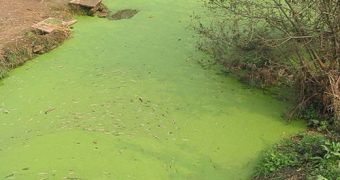Officials from the US National Oceanic and Atmospheric Administration (NOAA) announce that they are offering $543,336 in funding for two competitive grants, aimed at studying the natural phenomenon known as Harmful Algal Blooms (HAB). The experts want to study how algae multiply in the Puget Sound area, which represents one of the most interesting and precious ecosystems in the United States today. HAB can influence public health and fisheries' productivity, and so these investigations can have significant long-term benefits.
NOAA estimates that the numerous three-year research projects on algal blooms it has set in motion recently will cost about $1.5 million. However, the economic benefits that people will reap after the phenomenon is understood will far outweigh the costs, analysts believe. The main target of the investigation concerning the Puget Sound area is determining which regions are most at risk from being infected by the toxic dinoflagellate Alexandrium catenella. This particular species of algae produces potent toxins that can easily accumulate in shellfish. This has the potential to disrupt the ecosystem in those regions, leading to infections in the general population, and to decreased economic productivity.
When people consume shellfish that have been infected by A. catenella, they develop the potentially-fatal condition known as paralytic shellfish poisoning. The condition springs up rather often in the Sound, and this is one of the main reasons why productive businesses are closed. With the data that will be accumulated during the NOAA-sponsored investigation, authorities and fishery owners hope to become able to plan and implement mitigation measures in advance. This could reduce the economic losses associated with algal blooms, and would also reduce the incidence of paralytic shellfish poisoning.
“This kind of advanced warning will allow us to make proactive decisions to protect public health and make better use of resources. If fisheries managers know that the coming year is going to be 'bad' for toxic events, they can choose to harvest earlier in the year before the bloom season begins to minimize economic losses associated with shellfish closures,” says Washington State Department of Health biotoxin expert Frank Cox.
“Catching this alga in its most active stages may unlock the clues to what turns this species toxic. This mobile lab will provide us with a capability we’ve never had before, and may be key to ensuring safe and economically secure finfish production in Puget Sound and other regions threatened by this harmful organism,” adds project leader Vera Trainer. She is also an oceanographer at the NOAA Northwest Fisheries Science Center. The investigation is conducted with funding secured through the NOAA Ecology and Oceanography of Harmful Algal Blooms (ECOHAB) Program.

 14 DAY TRIAL //
14 DAY TRIAL //